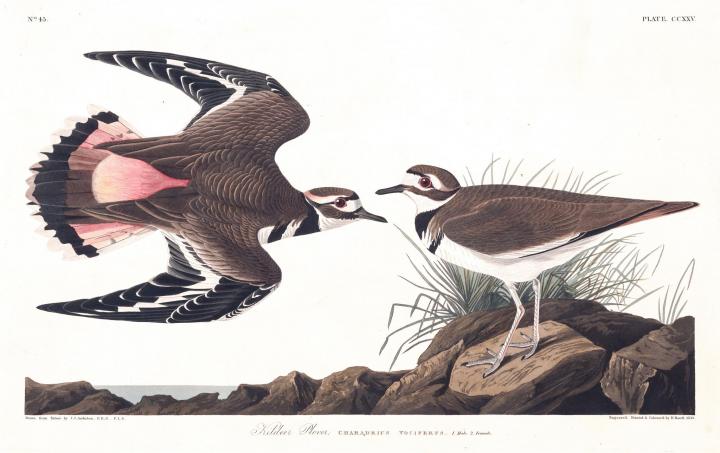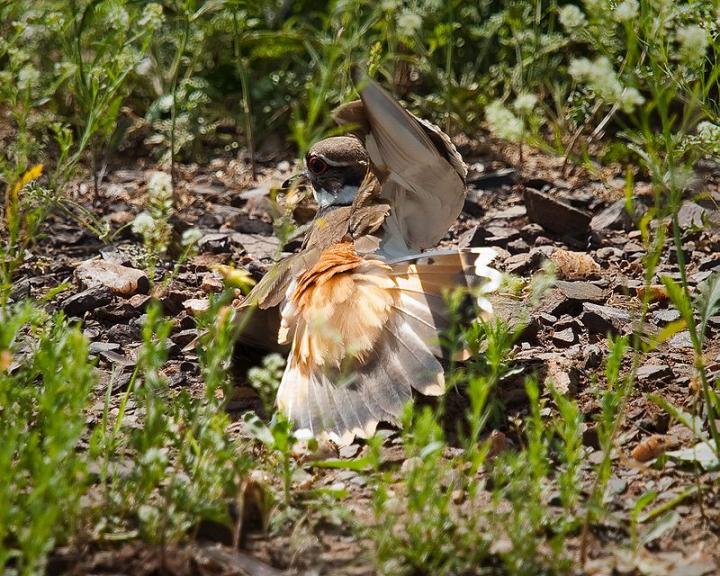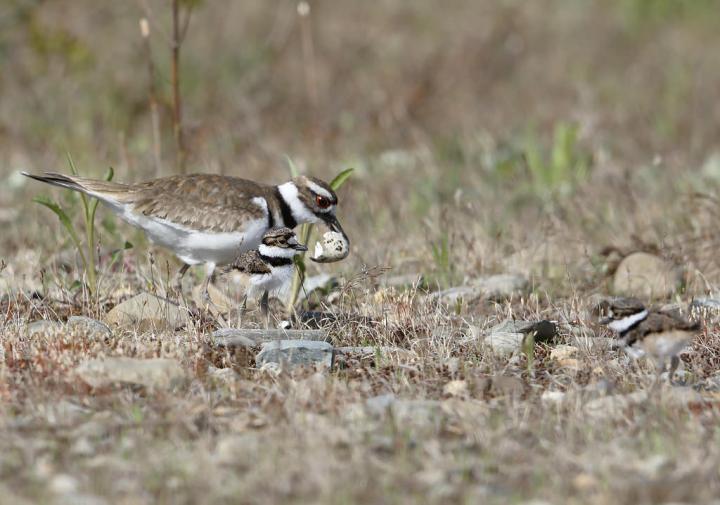
Fascinating Facts About the Killdeer Bird
ADVERTISEMENT
I used to have a Killdeer bird nesting on my acre in my back yard ever spring several years ago. But I have not seen any killdeers on my fenced in property for many years. Perhaps it is the presence of stray cats coming into my yard, which seem to have increased in numbers over the last few years. There is a lot of new home construction going on around me, on land that was just fields for hay. Loss of habitat maybe. That seems to be our future for rural areas, at least in Texas.
3or 4 years ago we had 6to 8 young killdeer young that was close to our home for 2or 3 days I am now 83 this was the first time I had seen baby Killdeer and i stay outside a lot my wife and I watched THEM play and feed in our yard every morning while they were around
We currently have a nest in the gravel near the driveway here in Northern Calif. There are four eggs in the nest. I constructed a five foot high fence around the nest site. It comes no closer than 20’ to the nest. The mom and dad take turns sitting on the nest. They are three weeks into sitting on the eggs. Hopefully we will see chicks soon.
What a wonderful story of an amazing little bird! I have so many birds that come to feed in my yard, mostly Cardinals, but many others as well. I have heard some odd bird sounds coming from the trees, I'll keep a look out, maybe we have a kill deer family! Thank you, I love your stories ❤️
I came into contact with a Kill Deer while I was picking strawberries at Hallock's Farm in New Jersey. Something was making an awful noise really close to me and I thought some animal may have gotten into my box of berries. Another picker noticed my strange look and told me to turn around and there was this bird puffing itself up with outstretched wings just yammering at me and that is when I noticed the eggs on the ground on the straw ridden path between the strawberry rows. I will always remember this brave mother bird protecting her babies.
They nested on the gravel roof of a building I used to work on the air handlers on. I had to watch my step…
I live near Killdeer, ND and have loved these birds for years. Thought they were just a pipers and now I know their real and ironic name, such graceful and vocal birds. They’re here every summer and brave as they come.
I have seen killdeer nest on the shoulder of a Road a few years ago and another in the middle of a Driveway their property owners placed barricade around the nest to keep it safe because these Birds feed on Insects that damage crops and ruin gardens
There is a single killdeer mom who is tending the nest by herself. Is there anything I can do to help her? I've sprinkled some seed around her nest.
I will be on the look out for this fascinating bird! I really enjoy reading your article’s, thank you!











